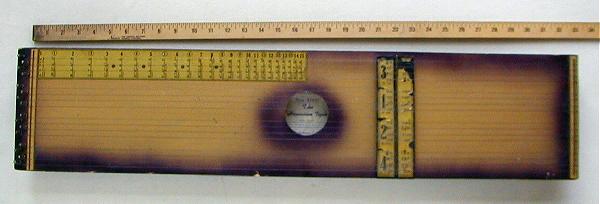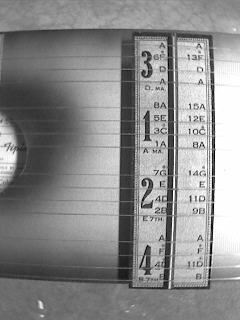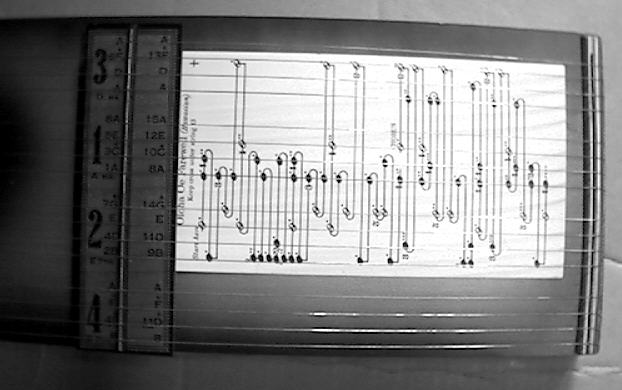 posted 15 September 2002 09:16 AM
profile send email edit
posted 15 September 2002 09:16 AM
profile send email edit
I broke down and bought one of these off of eBay. In case you've ever wondered how they're played and how they sound, here's my report.

Layout
 The instrument has sixteen strings arranged in four groups of four strings. Each group of four strings is tuned to a chord. The top group of four strings are tuned to a D major chord (A D F# A, low to high). The other sets are tuned to an A (A C# E A), E7 (B E G# D) and B7 (B D# F# A). I hope you like playing in the key of A.  The strings are played on both sides of the bridge. The bridge is positioned 2/3 of the way across the top. As a result the strings to the right of the bridge are exactly one octave higher than the strings to the left of the bridge! The instrument takes advantage of the fact that the I, IV and V chords contain all of the notes in a diatonic scale. In the photo you can see the notes of the scale are numbered from 1 to 8. Altogether it has a two octave range. Playing a scale is a tricky because the notes are scattered among the different groups of strings  . . There is a strip of paper under the top group of strings that shows the fret positions so you can play it lap steel-style. The strings in this group have the same relative relationship as the four highest strings on a dobro or lap steel tuned to Open G. Thus anything that can be playing on the four highest strings on those instruments can be played on this instrument  . . Playing

The instrument came with song sheets. These are placed under the strings on the right side of the instrument. To play a tune one follows the path and plucks the indicated notes in the order shown. Sometimes a chord is to be strummed. In that case there is a number indicating which chord. Plucking and strumming seems to be the primary way of playing the instrument. The song sheets I have say nothing about the use of a slide. Sound When plucking or strumming the instrument you get a lot of sympathetic vibrations by the undamped strings. It gives it a chimey, celestial sound similar to that of a hammer dulcimer or autoharp. It is not a very loud instrument. When played lap steel-style the sound is very "thin" - not very dynamic, not very harmonically rich and not much sustain. However, it's not necessarily an unpleasant sound. A ukulele sounds thin compared to a guitar but it still has its use. Overall it's a fun instrument to fool around with. Obviously it was designed to be a simple, cheap instrument that's easy to play. I admire the inventiveness of the designer - it does contain a couple of clever ideas.
I created a webpage that repeats everything I said but with slightly more detail: Hawaiian Tiple
EDIT: Fixed broken links
[This message was edited by Gary Anwyl on 12 April 2006 at 04:16 PM.] | 
 The Steel Guitar Forum
The Steel Guitar Forum

 No Peddlers
No Peddlers

 Hawaiian Tiple
Hawaiian Tiple






 .
. .
.
